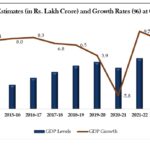Life insurers are staring at a generational challenge. Despite younger consumers acknowledging the importance of financial protection, traditional life insurance products are losing relevance as millennials and Gen Z delay marriage, parenthood and other life milestones that once drove demand.
The World Life Insurance Report 2026, released September 15, 2025, by Capgemini Research Institute and LIMRA, finds that 68 per cent of adults under 40 view life insurance as essential for long-term financial stability. Yet adoption remains weak, with one-third citing a mismatch with their current stage in life, 28 per cent calling premiums too expensive, and one in four rejecting policies outright because of their lack of immediate benefits.
Instead, the new generation of customers is asking for what the industry has long resisted: policies that provide tangible support during their lifetime, not just payouts after death. These include wellness incentives, emergency financial cover, and even fertility treatment benefits.
A market out of sync
The findings underscore how far insurers have drifted from the realities of younger adults. Traditional life events such as marriage and children, once reliable triggers for policy purchases, are no longer universal. The survey shows that 63% of under-40s have no immediate plans to marry, while 84 per cent of both single and married respondents are not considering parenthood soon.
“Insurers have relied for decades on the assumption that life milestones would automatically bring consumers into the market,” said one senior executive at a European insurer. “That model is breaking down. The industry has to prove its relevance earlier in life.”
Yet paradoxically, this generation is on the cusp of inheriting significant wealth. Over the next two decades, trillions of dollars are expected to shift from baby boomers to their children and grandchildren. The survey estimates an average inheritance of about $106,000 per person for millennials and Gen Z. Nearly 40 per cent of respondents ranked life insurance and annuities as the third most important vehicle for investing inheritance wealth, behind only stocks and cash savings.
This places insurers at a crossroads: while demand could eventually surge, the current product suite is failing to connect with consumers in the wealth accumulation phase.
Industry scrambling to adapt
Executives surveyed in the report acknowledge the challenge. They point to three forces reshaping strategy: aging populations (64 per cent), delayed milestones (53 per cent) and economic uncertainty (51 per cent). Together, these trends suggest that younger customers will not buy life insurance out of obligation but only if it aligns with their broader financial lifestyle.
“The industry cannot rely solely on death protection to sustain its future,” said Samantha Chow, Global Leader for Life Insurance, Annuities and Benefits at Capgemini. “Life insurers need to demonstrate near-term value.”
Some carriers are beginning to experiment with add-on benefits, linking policies to wellness programs, fitness rewards or flexible cash advances. But adoption is uneven, and younger customers remain skeptical. Confusing terms and opaque processes discourage one in four potential buyers, according to the study.
Portability is another stumbling block. Forty-four percent of employees with group life coverage want policies that remain valid if they switch jobs. But only 19 per cent of insurers offer seamless portability, often requiring consumers to reapply or undergo new medical checks. This not only frustrates customers but also undermines long-term retention for insurers.
Digital deficit
The digital gap may be the most pressing challenge. While 59 per cent of under-40 consumers say they want to interact directly with insurers through digital channels, just 31 per cent of carriers provide such platforms.
Expectations are higher when it comes to personalization: more than three-quarters of young consumers want data-driven recommendations and tailored financial guidance. Yet only 16 per cent of insurers offer such services at scale, constrained by legacy IT systems and high transformation costs.
“Technology is no longer optional,” said Bryan Hodgens, Senior Vice President and Head of LIMRA Research. “The younger consumer expects financial services to work like their favorite apps — instant, transparent, and personalized. Life insurance lags badly in that regard.”
From insurance to “insurance for living”
The report calls for a three-pillar transformation: innovating products with living benefits at the core; empowering advisors with AI tools and modernized compensation structures; and forging ecosystem partnerships with financial institutions, wellness providers, and HR platforms.
Embedding insurance into everyday experiences is seen as key. For example, partnerships with fertility clinics or wellness apps could position life insurance not as a future safeguard but as an enabler of immediate life goals. Such moves could also help reposition insurers as allies in younger customers’ financial and health journeys.
Industry analysts say this shift amounts to redefining the product itself — from insurance for death to insurance for living. The concept is gaining traction as insurers explore hybrid offerings that combine protection with wealth-building and lifestyle benefits.
Risks of standing still
The cost of inaction is high. With competing financial products — from low-cost exchange-traded funds to buy-now-pay-later credit — clamoring for younger adults’ attention, life insurance risks being sidelined. Misconceptions about affordability already leave policies at a disadvantage compared to other investment and protection tools.
For insurers, the generational disconnect could erode market share in their core product, threatening profitability in a sector already pressured by low interest rates, rising longevity and regulatory changes. For consumers, it risks widening the protection gap — leaving younger families financially exposed in times of crisis.
The report’s message is clear: if insurers want to capture the next generation, they must act quickly to reimagine life insurance as a product that speaks to both immediate needs and long-term security.
“Millennials and Gen Z will not buy life insurance because their parents did,” said a financial services consultant. “They will buy it if it feels as useful as their health app or their investment platform. That’s the new benchmark.”


![capgemini-x[2]](https://southasianherald.com/wp-content/uploads/2025/09/capgemini-x2.jpeg)



